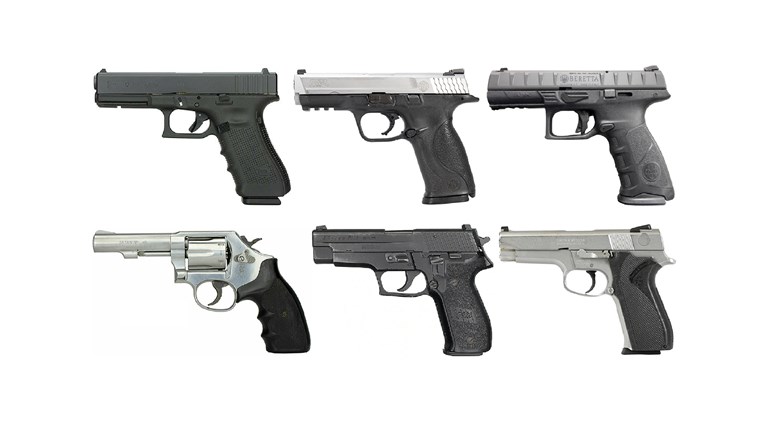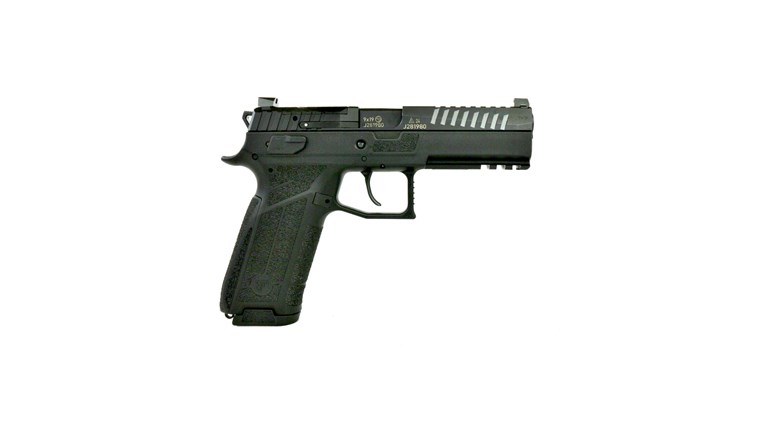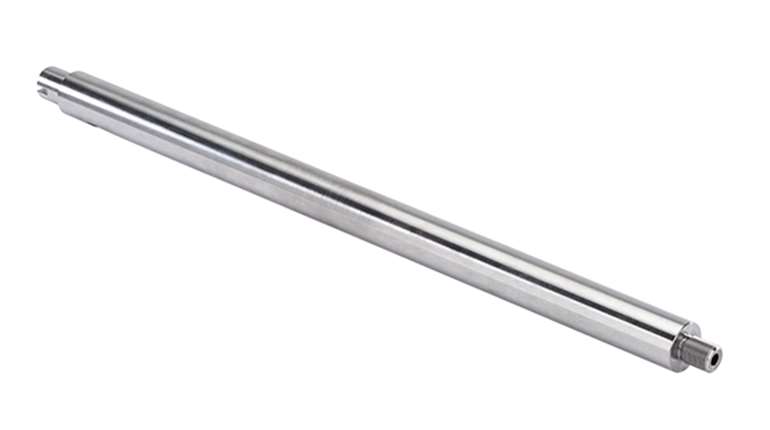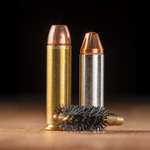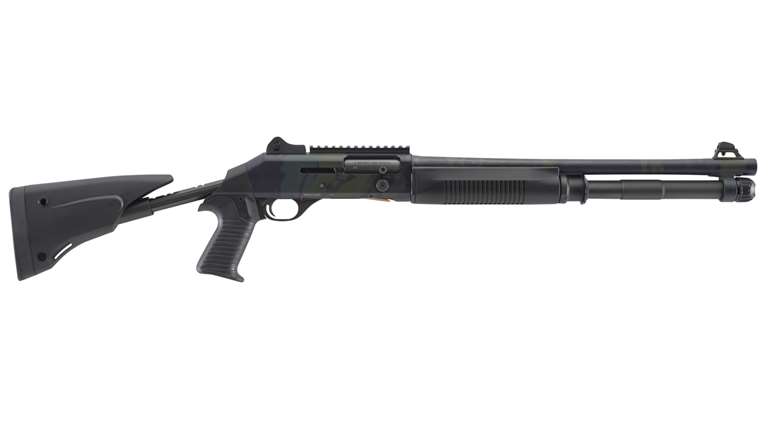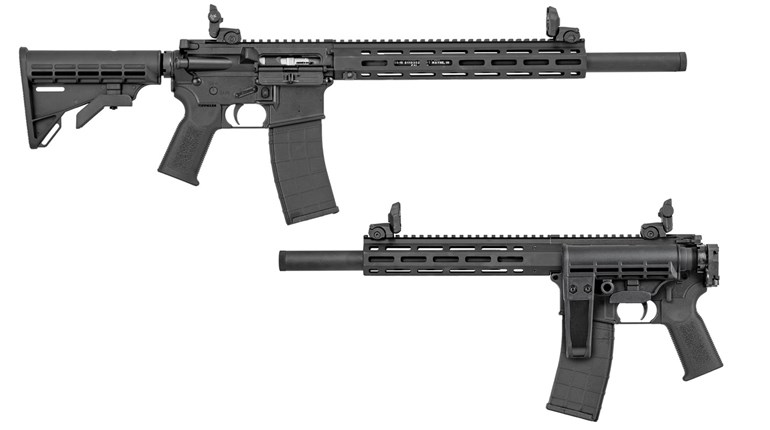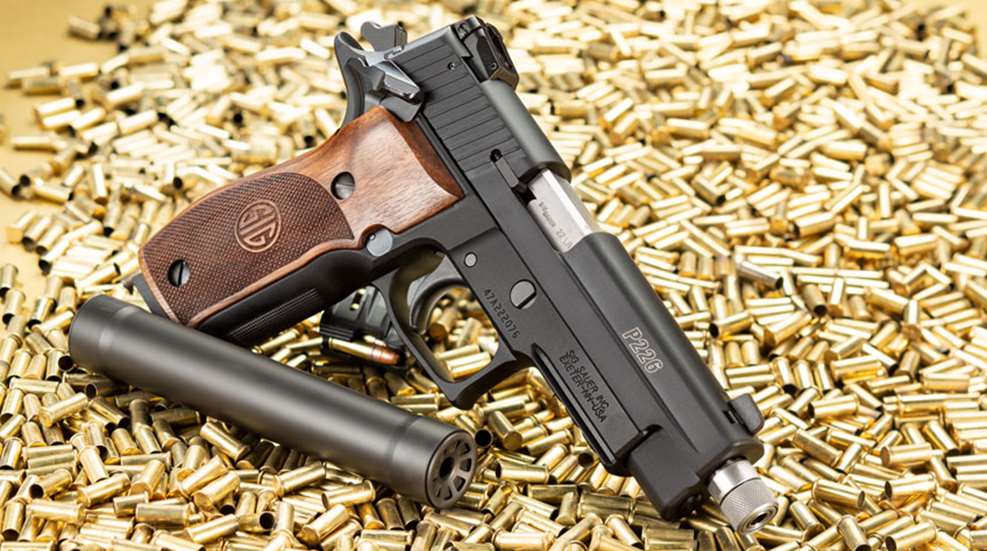
Converting a centerfire pistol to rimfire dates back to the 1930s, when Colt released the Ace .22 LR M1911 and then sold a conversion kit based on it. Later on, conversion kits in the U.S. were made for the M1911, Beretta 92, SIG Sauer P series, CZ-USA CZ-75 and Glock G17 and G19. Those designs have endured, but new kits are now made for Springfield Armory’s XD series, Kel-Tec’s PF-9 and P11, polymer-frame CZ pistols and the Ruger LC9 and LC380 pistols.
Why Buy a Kit?
Conversion kits pay for themselves in ammunition savings, but they offer additional benefits—and a few less-apparent drawbacks. On the plus side, they install without modification to the host firearm and are an ideal way to train new shooters who want to eventually carry a defensive pistol of suitable caliber. By starting them off with the .22 LR conversion, there’s far less chance of developing a flinch, and confidence and marksmanship can be more quickly acquired than when using a centerfire. Moreover, because the converted firearm retains the trigger, controls, grip and often the same sights as its more-potent sibling, there’s no need to retrain after the eventual step up to the centerfire firearm.
Also, most conversions fit the same holsters as their centerfire host, so beginners can learn to draw and shoot with ease. All of the kits I tested, except for the M1911 and the CZ P-09, have drop-safe devices like the original centerfire pistols, so they can be carried with a loaded chamber without concern that dropping the pistol on its muzzle could enable the firing pin to overcome spring tension and move forward and contact the primer. Finally, because the .22 LR cartridge is inherently less reliable than a centerfire, training on a conversion offers realistic opportunities to practice immediate action/clearance drills.
There are a few downsides to these kits. They function well using high-velocity loads with 40-grain, round-nose bullets, but may not feed hollowpoints as reliably, and magazines typically hold a meager 10 rounds. Kits made with steel slides may cost more than some entry-level polymer pistols, but they are often built to higher quality than low-priced versions that use thin-walled, multi-piece barrels, plastic fixed sights and light-duty parts.
I tested each conversion kit for function using assorted 40-grain, round-nose loads (Winchester M22, Remington Golden Bullseye and/or CCI Blaser) and bulk-pack Federal 36-grain hollowpoints. Kits with threaded barrels were also function-tested with a SIG Sauer SRD-22X suppressor and standard-velocity ammo. Back pressure from the suppressor felt on the shooter’s face and firing hand varied slightly by kit, but was not uncomfortable—Tactical Solutions’ Glock conversion had the least felt back blast. Because these kits are used for plinking and training, accuracy was not assessed, but fixed sights were tested for point-of-aim/point-of-impact convergence.
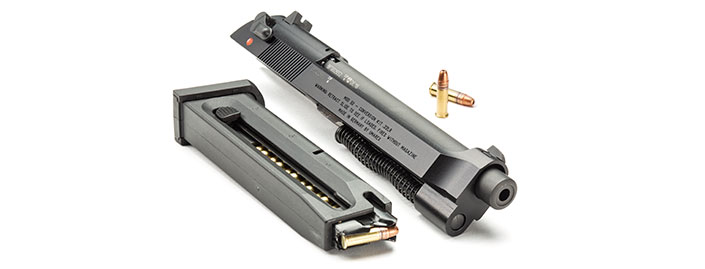
Beretta 92/96
Beretta’s conversion kit fits full-size 92/96 frames made since 1985. Made by Umarex in Germany, this kit closely patterns the original 92 down to the fixed sights with white dots and the ambidextrous safety/decocking lever. An added feature is a small spy hole atop the slide to check chamber status.
This conversion breathed new life into my 92FS. It is the only kit that functioned perfectly with all loads, including the hollowpoints, and the fixed sights were among the best regulated with shots printing only 1 inch high and slightly left at 50 feet. An extra front sight is included to change elevation, while the rear assembly is secured with a setscrew and can be drifted to adjust windage. The drop-free magazine is also the best of the group. Made of stainless steel with a polymer shell, it holds 15 rounds, has a follower pull-down button for easy loading and a witness window with five-, 10- and 15-round indicators.
The threaded barrel has a full-diameter muzzle, so it attaches directly to the suppressor. Though the sights are barely high enough to clear the SRD-22X suppressor, the white dots are visually distinctive and allow for decent alignment. If you want a perfect sight picture, Beretta sells suppressor-height sights with white dots that fit this conversion and the Model 92 Vertec.
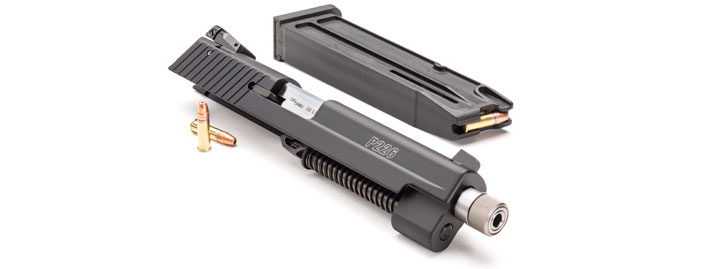
SIG Sauer P226
SIG Sauer’s conversion kits for certain P-series pistols are only made on special production runs. If you can’t find one when you want it, however, you can always buy a P226 chambered in .22 LR. It essentially has the same frame used on SIG’s centerfires, and can be upscaled with a centerfire conversion kit (the opposite of what we’re talking about here). SIG’s .22 LR kit is quite well-made and finished, and the only tested model with a lifetime warranty. The extractor is a wide-claw type, while the stainless steel barrel is close to the outside diameter of a 9 mm barrel and has a recessed crown to protect the muzzle from damage. The kit comes with a single polymer, 10-round, drop-free magazine.
Sights are made of steel using the familiar three-white-dot pattern, and the rear sight is fully adjustable. The aluminum slide does not lock back after the last round is fired, but it can be locked manually. An optional threaded barrel uses an adapter to mount the SRD-22X suppressor, and the sights are high enough to completely clear the tube, allowing for a precise aim. My kit occasionally cycled sluggishly for the first 50 rounds, but flawlessly thereafter with every load tested, including hollowpoints.
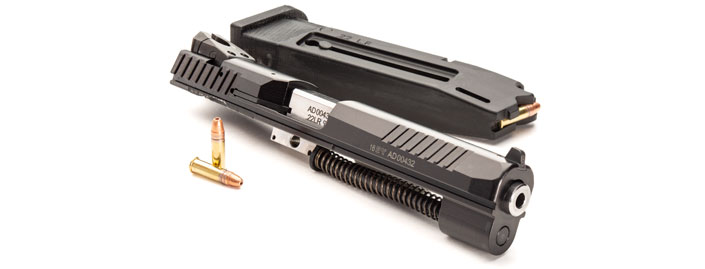
CZ P-09
CZ’s Kadet conversion kits now include a model for the polymer frame P-09. All of CZ’s Kadets undergo the same factory protocol as the company’s centerfire pistols, with a proof-load test and a 25-meter accuracy test. Included with the kit are the test target, two drop-free 10-round polymer magazines, a cleaning rod and brush and a slide-stop lever. The P-09 Kadet retains the centerfire slide’s appearance, including front and rear serrations, but is made from aluminum and uses target-style fixed sights without the white dots. These sights are steel with fine, horizontal serrations on front and rear that are effective at reducing glare from sunlight. My test pistol shot 2.25 inches above point-of-aim at 50 feet, but that is correctable by replacing the front sight with a different blade from CZ-USA using only an Allen wrench. The rear sight is drift-adjustable after loosening a setscrew.
The Kadet functions like the P-09 centerfire, with the slide locking back after the last round is fired and a functional decocker and manual safety. Though the firing-pin drop-safe device is not used, it is likely considered unnecessary by CZ because the lightweight, spring-loaded firing pin has minimal mass. Moreover, the lack of this device may have contributed to this pistol’s exceptionally smooth, fluid single- and double-action trigger pull. My conversion kit preferred the 40-grain round-nose loads, but still functioned at about 94 percent using the 36-grain hollowpoints.
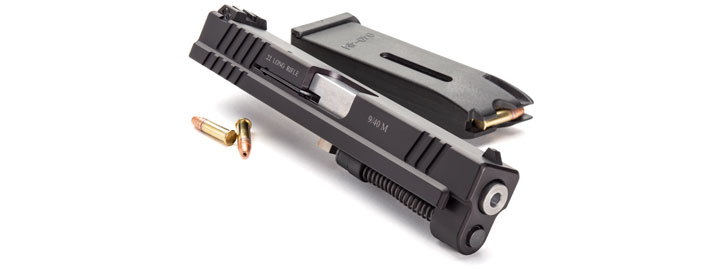
Springfield Armory XD
Advantage Arms’ newest conversion kits fit several variants of Springfield Armory’s XD line. The tested kit fits the XDM. It has a slide contour like the original, but uses adjustable, factory-made Glock sights. The kit has a stainless steel barrel and comes with two 10-round, drop-free, polymer mags, loading tool and a padded nylon case. The anodized-aluminum slide has a steel insert that contacts the slide-lock lever to lock the action open after the last round is fired, without risking damage to the slide. My kit functioned reliably with high- and standard-velocity, round-nose loads, but as Advantage Arms notes, it does not feed hollowpoints.
Kits for Glocks
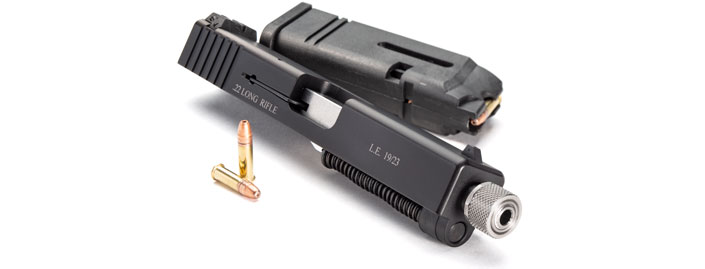
Advantage Arms
Advantage Arms is the most experienced and the dominant maker of Glock conversions, and the only manufacturer to offer a 25-round magazine. Several kits are available, including those that fit the large-frame 10 mm and .45 ACP Glocks. Priced at about $249, these kits are a good value and each comes with two 10-round, drop-free magazines, a mag-loading tool and a padded nylon case. Fit and finish are good and the kits use a stainless steel barrel and steel recoil-spring guide rod. The anodized-aluminum slide incorporates a steel insert at the slide-stop notch, providing slide lock after the last round. For added realism, Advantage kits use Glock adjustable sights with the familiar white bracket outlining the rear notch and a white-dot front.
With the 10- and optional 15-round mags, my Glock G19 kit functioned perfectly with all loads—even the hollowpoints that the company does not recommend for the kit. After three failures to feed on the first full load, the 25-round magazine ran equally well. With a threaded barrel, the sights nearly completely cleared the SRD-22X suppressor, allowing for a precise sight picture. The barrel uses an adapter to attach to the suppressor, so keep the threads dry and check for a snug fit after firing every magazine.
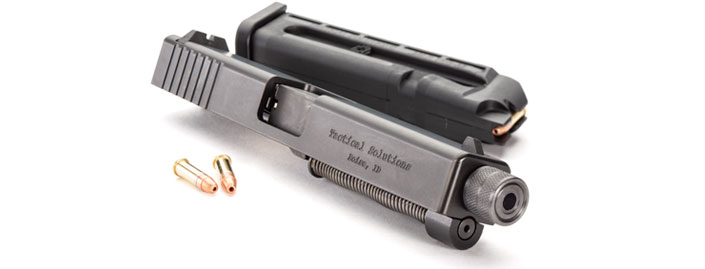
Tactical Solutions TSG-22
Tactical Solutions makes kits to fit Gen1 through Gen4 Glock G17/G22 and G19/G23 pistols. These kits are well-built with a slide made from 4140 heat-treated steel with black-nitride finish, a .55-inch diameter barrel and a wide-claw extractor. For only $10 more, you can order one with a threaded barrel that attaches directly to the suppressor. These kits incorporate slide-lock-after-last-round function and come with a sturdy 10-round magazine with a thumb pulldown button for easy loading. However, it conspicuously protrudes below the grip of a Glock G17 by about an inch.
My TSG-22 functioned well with all of the 40-grain loads and about 90 percent of the time with the hollowpoints. The Glock-style fixed sights have a white dot out front and white-bracket outline on the rear and are well regulated, with bullet strikes landing only .5-inch high and .5-inch right from point-of-aim at 50 feet. However, they are not high enough to give an unobstructed sight picture with the SRD-22X suppressor.
Kits for the M1911
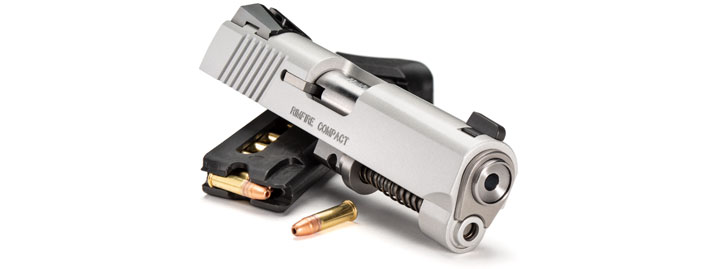
Kimber M1911 Compact
For the purist M1911 aficionado who wants a .22 LR made as closely as possible to the original, Kimber’s conversion kit is the only one I tested that uses a slide dimensionally and visually matched to the centerfire. This kit also attaches to the frame and fieldstrips like the original M1911, with a removable barrel bushing and recoil-spring guide and plug.
Made for compact M1911s, this kit comes with one non-drop-free 10-round polymer magazine that protrudes from the base of a compact M1911 frame, but still provides a comfortable grip. The slide does not lock back after the last round is fired out of concern that the aluminum slide will become abraded by the steel slide-stop, but it can be locked manually. This kit has high-quality fit and finish, and uses a match barrel with recessed crown, steel recoil-spring guide rod and a wide-claw extractor. Its barrel bushing also provides a tight barrel-slide fit necessary for precision.
The Kimber Compact has the best target-style fixed sights of the group, with fine horizontal serrations that cut glare and a wide front blade that appears darker than the rear sight to draw your attention. The rear sight is easily drifted for windage by loosening a setscrew. My kit shot 1.25 inches below and .5-inch right of point-of-aim at 50 feet. It functioned fairly well, though a failure to fully chamber a round occurred on occasion with the hollowpoints.
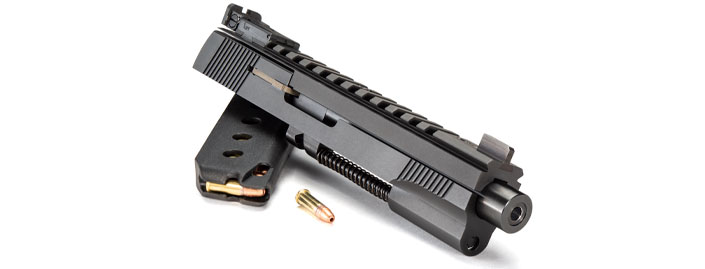
Marvel Precision
Marvel has a reputation for making superior M1911 kits, some of which shoot accurately enough for formal bullseye competition. The Type 1 kit fits full-size M1911s, is designed to function with standard-velocity ammo and is guaranteed to deliver 1-inch, five-shot groups at 50 yards from a Ransom rest. My kit came with a test target measuring a remarkable .571 inch using Eley Target ammo. This kit is made from steel and extremely well built with a bull barrel with match chamber, full-length sight rail, fully adjustable Kensight rear sight and a front sight with glare-reducing serrations. The mounting system contributes to its accuracy by rigidly attaching the barrel to the frame. Using a supplied socket wrench, the steel guide rod is tightened against the slide-stop pin, eliminating any movement between barrel and frame, making the M1911 into a fixed-barrel target pistol. Marvel kits are sold separately or with a Frerking Custom Works M1911 frame. My kit functioned flawlessly with Remington Target and CCI standard-velocity loads, and even worked fairly well with the Federal hollowpoints.
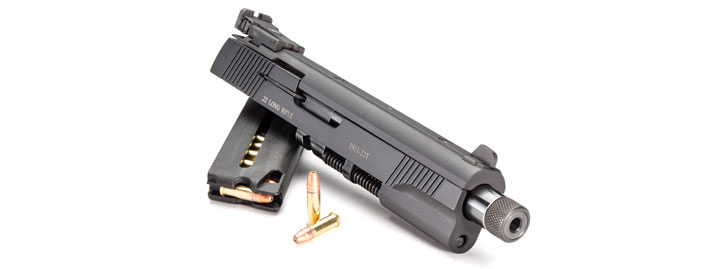
Advantage Arms
The Advantage Arms M1911 kit shares several features of the Marvel, including a bull barrel, rigid mounting system and a Kensight rear and serrated front sight. However, it uses an aluminum slide with a steel insert at the slide-lock notch to facilitate slide lock after the last round. This kit comes with two 10-round, non-drop-free, polymer mags and an attractive, padded nylon carrying case.
Installing this kit is tricky, requiring a “third hand” to press the slide-stop detent pin inward while holding the slide rearward and pressing the slide-stop lever into position, but disassembly is easy. This kit has a full-length sight rail drilled and tapped to accept a Picatinny-style rail for optical sights. It functioned well using both standard- and high-velocity loads with 40-grain round-nose bullets, but did not feed the hollowpoints. The optional threaded barrel attaches directly to a suppressor and the sights were tall enough to provide a completely unobstructed sight picture when using the SRD-22X.
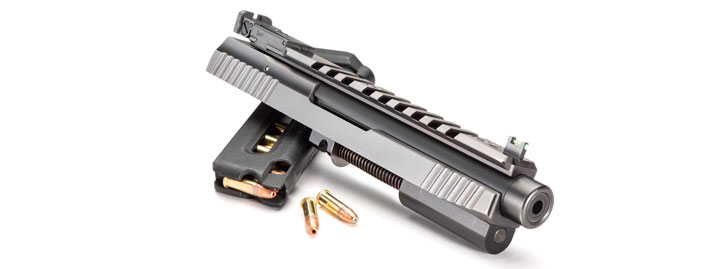
Tactical Solutions TS-2211
The TS-2211 is an all-steel kit with a bull barrel that gives the conversion the heft of a .45 ACP. It installs easily onto full-size frames using only the slide-stop pin as the attachment point. This kit uses the same Kensight rear sight as the others, but with a green fiber-optic front sight that makes alignment quick and certain. The TS-2211 comes with one 10-round, non-drop-free, polymer magazine with a bumper pad. An aluminum magazine is optional, but extends conspicuously from the grip because it is designed for pistols with a mag-well funnel. My unit has a threaded barrel that attaches directly to a suppressor and a Picatinny-style top rail for optical sights.
The TS-2211 functioned with 95-percent reliability with the standard- and high-velocity round-nose loads, but not with the hollowpoints. The sights work well even in subdued light and completely clear the SRD-22X suppressor.
And What About That AR-15?
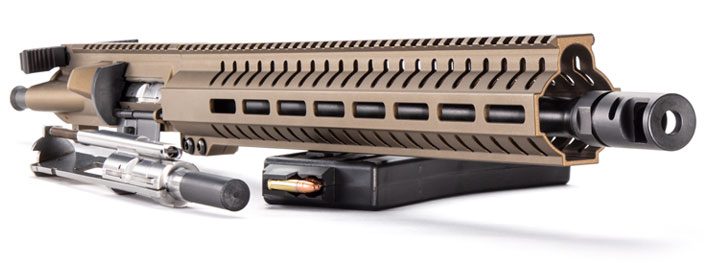
The benefits of a rimfire conversion have long been recognized for rifle shooters, with kits made for bolt-action, semi-automatic and even selective-fire arms, including Heckler & Koch’s G3 and MP5, the M16 and the Uzi and Thompson submachine guns.
There are two ways to convert a 5.56 NATO caliber AR-15 to fire the .22 LR: install a drop-in caliber adapter or replace the upper receiver. CMMG makes solid options for both.
The drop-in adapter uses your AR-15’s barrel, but replaces the bolt-carrier group and magazine. CMMG substantially improved the reliability of the original Atkinson drop-in conversion, but even so, this method has disadvantages compared to installing a complete .22 LR upper. First, don’t expect much in the accuracy department. The rifling and bore diameter of your centerfire 5.56 NATO AR-15 aren’t ideal for the .22 LR, and there’s considerable freebore as the bullets travel through the chamber adapter into the rifling. Second, it’s advisable to clean lead and fouling from the barrel before switching back to firing 5.56 NATO. Finally, lead will begin to accumulate in the gas system, requiring a thorough cleaning of the gas-block port or your AR will start to function as a single shot.
The better solution is to switch to a .22 LR upper assembly. CMMG makes six different configurations with nitride-finished 4140 chrome-moly barrels and 1:16-inch rifling suitable for .22 LR bullets. These uppers function just like a standard AR and come with 10- or 25-round magazines made by Black Dog Machine. Reliability of my upper on a selective-fire lower using a variety of ammo—including hollowpoints and subsonic—was near perfect, even when running in full-automatic mode at 1,150 RPM using a 50-round drum mag.













